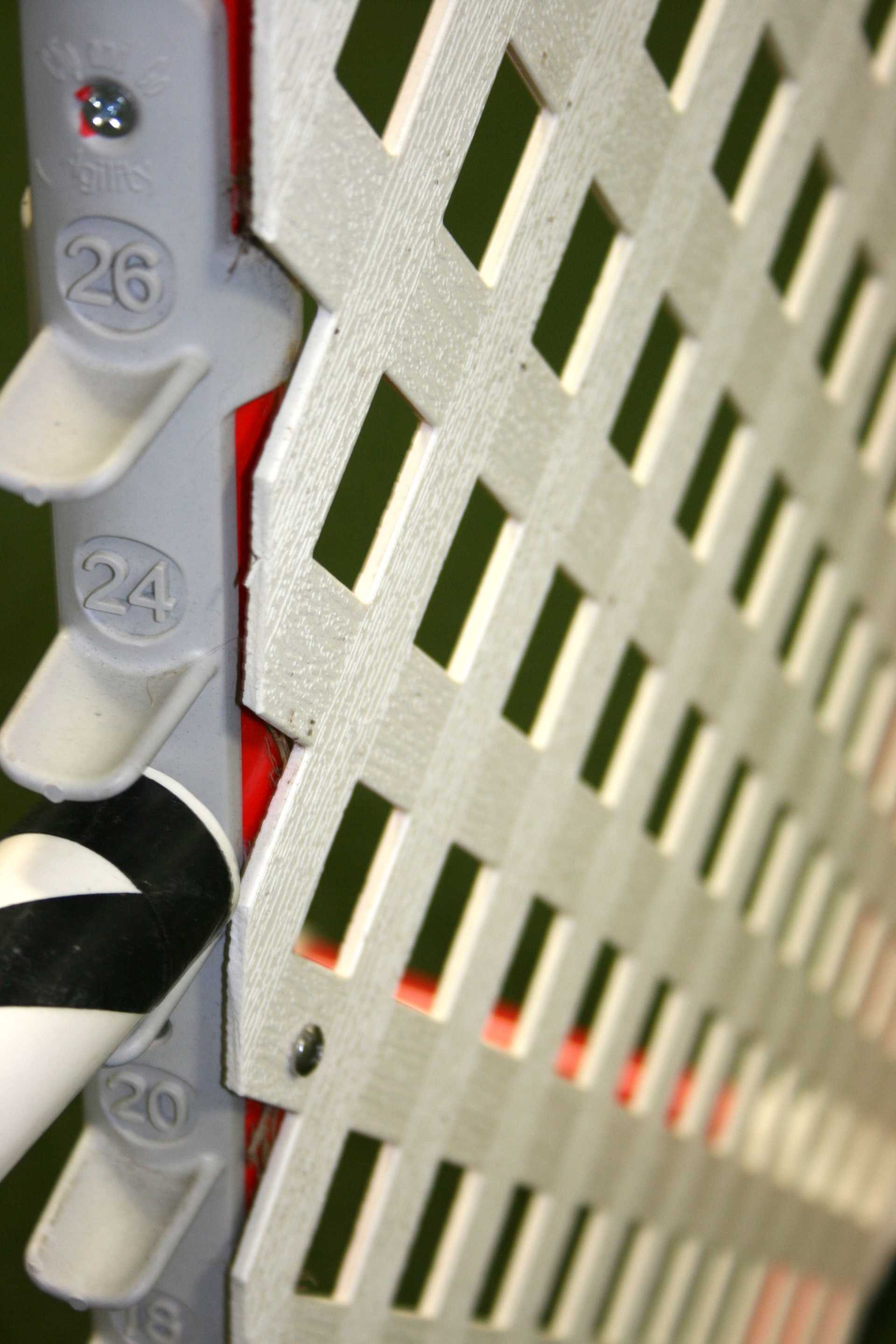Rubber Contacts and Training
21 Jul 2009
Rubber chip coated contacts are becoming more and more popular and are a “good thing” due to the excellent traction they provide, but they create some training challenges. In this post I’ve collected links to some good resources and some thoughts on how these obstacles affect our contact training.
Resources
- Linda Mecklenburg has long been a proponent of "rubberized" contacts and has posted some close ups of a wooden A Frame coated with crushed rubber and some resource links.
- The company that made rubber coating contacts well known is Contactacoat who makes kits for each type of obstacle containing two colors of rubber and urethane adhesive.
- Sue Fregien has put together a great web page containing resources and thorough instructions for application.
Which Contacts?
There are at most four contact obstacles used in most agility venues: A Frame, Dog Walk, Teeter, and the Table. UKC has a few others: Sway Bridge, Deck Jump, and Swing Plank (but I haven’t yet heard of UKC clubs investigating rubberized contacts). Clubs are choosing to rubberize some contacts and not others. So as a student, trainer, or club what are some of the considerations?
The A Frame is a “gimme” when it comes to rubberizing, it really helps the little dogs get up the front side. I’m not aware of any dog performances of the obstacle that benefit from the sliding allowed by non-rubberized front or back sides.
The Table is another obstacle where rubberizing is always done. The only issue I’ve heard is for dogs that slide onto the table in a down can be freaked out when they don’t slide anymore. I’ve heard they tend to adapt quickly. The rubberized table is a real saviour for dogs that routinely slide off regular sanded tables.
The Dog Walk clearly benefits by rubberizing as dogs can hang on when given bad approaches. One handler was telling me that her dog ran up and across the top while almost loosing its balance the whole way; she felt he would have flown off on the up ramp on a regular Dog Walk.
The Teeter is not getting rubberized by all clubs. There are a fair number of dogs who get to the tip point and slide in a crouch or down position into the yellow. Those dogs just don’t slide with the rubber chips installed. I’ve heard of some sliding dogs that would jump off of the rubberized teeters when they found they couldn’t slide. Others got used to it and didn’t do such a long slide into their final position. An argument against rubberizing, is handlers tend to be more careful with their dog’s approach to the obstacle and you don’t see many sideways fly-offs on the teeter.
Just as I was preparing this article a local club sent out an email to all of its newsletter subscribers asking if you’d like them to rubberize their teeter (all their other contacts have been rubberized).
What About Training Equipment?
The big issue is whether or not your dog will only experience rubberized contacts. Dogs have a much, much better grip on rubberized contacts. So much so that they can stay on the obstacles in situations where they would come off with non-rubberized contacts. So there is a real risk of injury to a dog that only trains on rubberized contacts when the dog encounters non-rubberized contacts in a trial. The handler has to be very careful of their dog’s approach to the non-rubberized contacts.
I’ve spoken with a few trainers and they are having trouble deciding whether or not and which obstacles to rubberize. They want their students to have exposure to both types of obstacles but not every trainer has two full sets of equipment.
One trainer has multiple locations and most of her students train at both locations, so she is rubberizing the Dog Walk, A Frame, and Table at only one location. So her students can get exposure to both types by going to both locations.
Another trainer is considering rubberizing only one side of her Dog Walk (including the top), 1/2 the A Frame and the entire table. That way depending on which direction the dogs approach the obstacle they will experience both types of contact surfaces.
Yet another trainer isn’t going to do any rubberizing until more of the local clubs have rubberized their contacts. She’d rather her students and their dogs be a little more cautious, especially on the Dog Walk up ramp.
For training equipment, it looks to me the Dog Walk up ramp is really the sticking point (pun intended) for whether or not to rubberize that piece of practice equipment. The added speed and confidence rubberized contacts give dogs could cause a dog used to rubber contacts to approach a non-rubberized Dog Walk with more speed or at an angle where they can’t stay in control. Of course another solution is to rubberize all your contacts (with or without the teeter) and only compete at clubs who have the same combination of rubberized equipment.
Other Thoughts
One thing handlers notice with the rubberized contacts is that you can’t hear your dog’s footfalls. The obstacles are a lot quieter and the auditory cue of your dog’s position when running ahead of your dog on the dog walk just isn’t there anymore.
In addition to rubber chips, NADAC allows the use of rubber matting on the A Frame, Dog Walk and Table(?). (As of this writing NADAC isn’t using the Teeter anymore). Specific manufacturers are required. Since no slats are used on NADAC equipment installing matting involves adhering the mats to the flat surface of the equipment.
Do you have any other rubberized contact training thoughts?
If you enjoyed this article won't you please:  Thanks!
Thanks!
